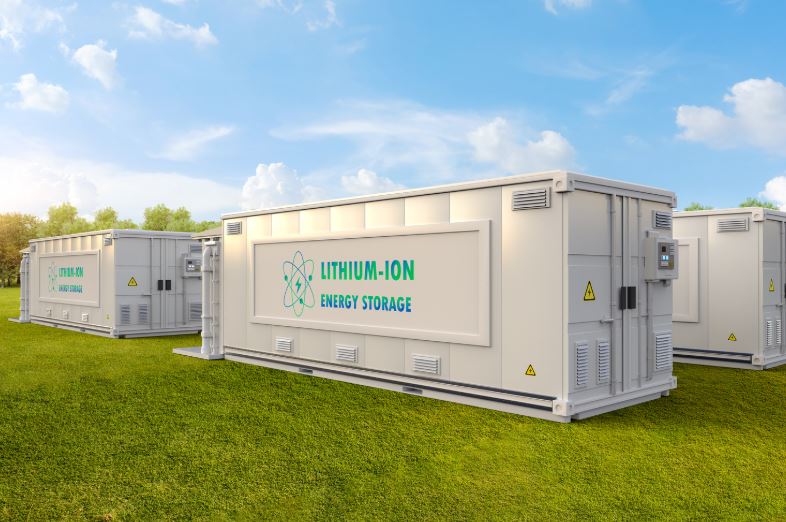California added over 4.5 GW of battery storage in 2024, according to the California Energy Commission, with a growing portion of that capacity sited not in remote substations but in urban centers. One of the latest—and most debated—additions is Arevon Energy’s $300 million Peregrine Energy Storage Project, which quietly went live in late July 2025 in San Diego’s Barrio Logan. At 200 MW/800 MWh, it’s among the largest urban energy storage facilities in the U.S., built around Tesla’s Megapack platform and tied directly into California’s Independent System Operator (CAISO) grid.
Designed to absorb solar oversupply during the day and dispatch power during evening demand peaks, the project aims to address the “duck curve” issue plaguing California’s renewables-heavy grid. Each Megapack unit at the site stores up to 3 MWh, and with hundreds installed, the facility can power approximately 200,000 homes during peak hours. While the technical metrics are in line with broader industry trends—California’s battery projects have reached cost levels of $300–$450/kWh—the location sets Peregrine apart.
The choice of Barrio Logan, a historically marginalized neighborhood with a legacy of industrial encroachment, has triggered a wave of scrutiny not typically seen in similar deployments. Arevon’s facility is not just a grid asset; it’s a stress test for how urban energy storage projects will coexist with communities that already bear disproportionate environmental burdens.
Safety Infrastructure Under the Microscope
Local skepticism centers on safety, particularly fire risks associated with lithium-ion chemistries. While California has made strides in battery regulation, high-profile incidents like the Otay Mesa fire in 2022 continue to inform public sentiment. Arevon has emphasized advanced safety architecture—thermal runaway suppression, active gas detection, and integration with San Diego’s emergency response systems.
Real-time monitoring and fire control systems are key components, and the facility’s ability to isolate and contain incidents within individual Megapacks could represent a new industry benchmark. However, a lack of independent audits or third-party safety validations means that confidence in the technology remains, for now, largely manufacturer-driven.
In a report by the San Diego Union-Tribune, Arevon cited its investment in “state-of-the-art” containment technology, though no specific certification data or incident response simulations have been publicly released. These gaps leave room for concern, particularly among environmental justice advocates who argue that community consultation came late in the process.
Economic Offsets and Community Tradeoffs
In response to criticism, Arevon has highlighted local economic benefits. The construction phase generated over 100 jobs, many filled by San Diego residents. The company has also committed funding to neighborhood beautification and local hiring for operations roles. Yet, critics argue that job creation, while welcome, doesn’t fully compensate for long-term risks or the symbolic placement of high-risk infrastructure in low-income communities.
The facility is not isolated in its ambitions. Arevon is also behind the forthcoming Nighthawk project in Poway, slated to add another 300 MW by early 2026. Combined, these deployments reflect a regional strategy to decentralize storage and minimize the need for long-distance transmission—an area where California has faced persistent bottlenecks.
The Utility Mandate Behind the Curtain
Peregrine’s rapid development was not an isolated corporate initiative but part of a larger regulatory context. In response to wildfires, grid blackouts, and extreme weather events, the California Public Utilities Commission has mandated that load-serving entities like SDG&E procure additional storage to stabilize the grid. Tesla’s domestic supply chain—Megapacks for the project were manufactured at its Lathrop, California factory—helped meet aggressive procurement deadlines and avoid delays associated with international logistics.
Tesla’s battery footprint in California is accelerating, with Megapack deployments projected to surpass 15 GWh statewide by 2026. This has been fueled in part by federal tax incentives under the Inflation Reduction Act, which allow standalone storage projects to access investment tax credits, effectively closing the financial gap that previously hampered utility-scale battery adoption.
Urban Storage as a Template—With Caveats
If successful, Peregrine could shape the model for dense, grid-integrated storage facilities nationwide. The balance between community integration, operational transparency, and regulatory compliance will be pivotal. Public data on Megapack fire performance, degradation curves, and response times remains limited. Without independent performance verification, companies like Arevon face the dual challenge of maintaining grid reliability while earning social license to operate in complex urban environments.
California’s battery storage expansion is not slowing—state goals call for over 15 GW of new storage by 2035. But projects like Peregrine underscore a shift in siting logic: away from remote desert arrays and into the very neighborhoods where power is most needed. That shift, while technically logical, will demand a parallel evolution in community engagement, safety transparency, and equity-based decision-making.
For now, the Peregrine facility stands as a high-voltage experiment—storing not only electrons, but the hopes and concerns of a neighborhood that’s seen more than its share of sacrifice in the name of progress
